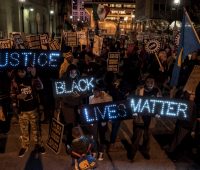Rachel Sherman provides a unique contribution to our What is Inequality? theme by focusing on the very top of the income bracket. Based on research among New Yorkers in the “1 percent,” Sherman uncovers the ways they understand and legitimize their wealth, in part through distinguishing their situation from other people of means who may not be “deserving.” Being legitimately “entitled” to affluence, according to the affluent, is based on a set of personal qualities with little reference to broader structural dimensions of inequality.





















